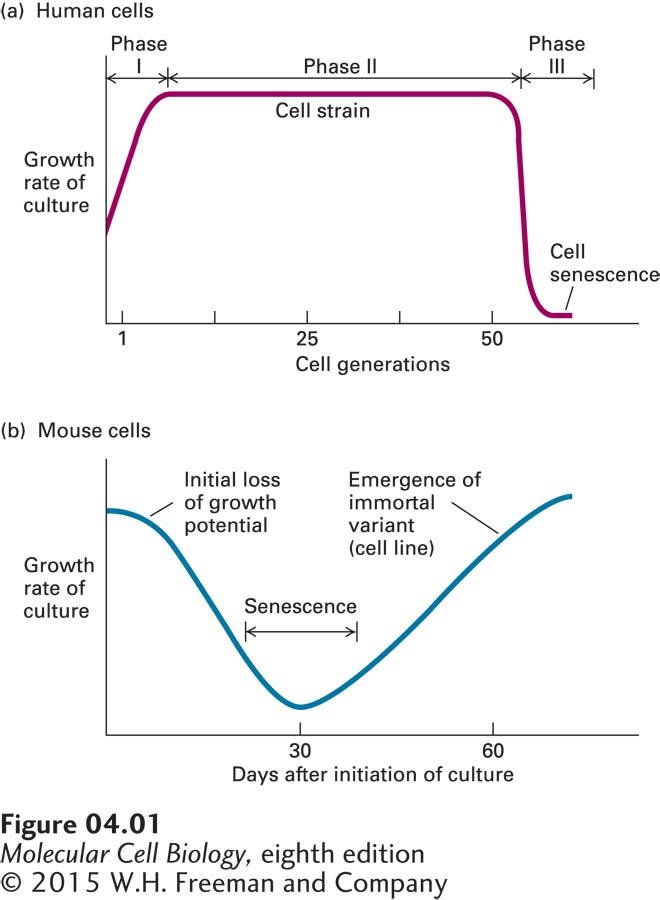
FIGURE 4- 1 Stages in the establishment of a cell culture. (a) When cells isolated from human tissue are initially cultured, some cells die and others (mainly fibroblasts) start to grow; overall, the growth rate increases (phase I). If the remaining cells are harvested, diluted, and replated into dishes again and again, the cell strain continues to divide at a constant rate for about 50 cell generations (phase II), after which the growth rate falls rapidly. In the ensuing period (phase III), all the cells in the culture stop growing (senescence). (b) In a culture prepared from mouse or other rodent cells, initial cell death (not shown) is coupled with the emergence of healthy, growing cells. As these dividing cells are diluted and allowed to continue growth, they soon begin to lose growth potential, and most stop growing (i.e., the culture goes into senescence). Very rare cells undergo oncogenic mutations that allow them to survive and continue dividing until their progeny overgrow the culture. These cells constitute a cell line, which will grow indefinitely if it is appropriately diluted and fed with nutrients. Such cells are said to be immortal.
[Leave] [Close]